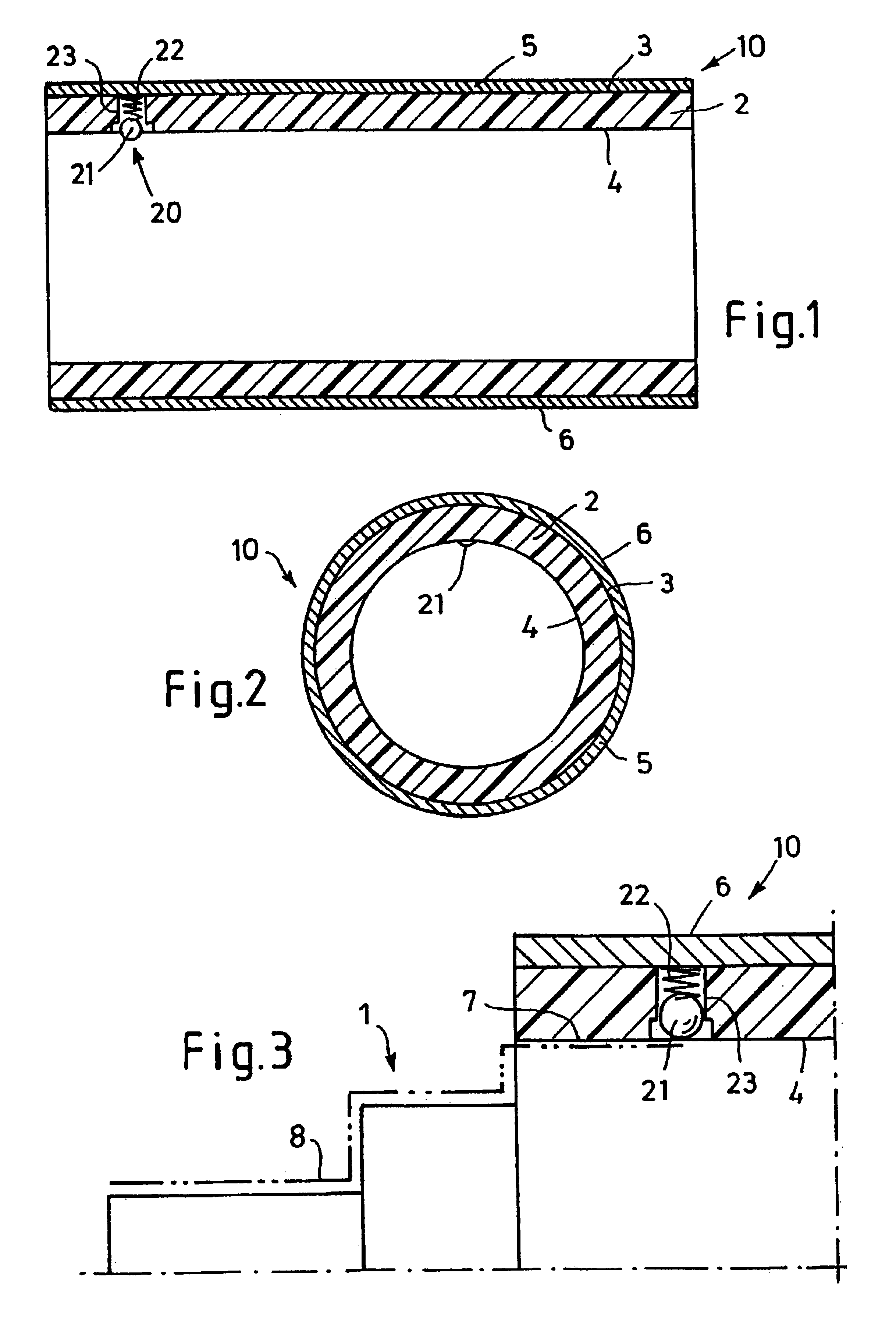Sleeve for flexographic printing
a flexographic printing and flexographic printing technology, applied in office printing, printing, printing processes, etc., can solve the problems of dangerous discharge into the ink duct, the inability to ignore the problem of electrostatic charging even in the printing presses for flexographic printing, and the inability to ignite or deflagrate the solvents in the colors
- Summary
- Abstract
- Description
- Claims
- Application Information
AI Technical Summary
Benefits of technology
Problems solved by technology
Method used
Image
Examples
Embodiment Construction
In the figures, reference number 10 indicates a sleeve for the flexographic printing, which is mountable on a flexographic printing press--not shown further--according to the air-cushion principle, on a king roll 1 designed as an air cylinder, shown exclusively in FIG. 3. Sleeve 10 has a cylindrical sleeve body 2 with a multi-layer structure. Sleeve 10 may, in particular, be a so-called build-up sleeve. Sleeve body 10 may exhibit a base sleeve made of a glass fiber reinforced plastic, for example, which is provided with several layers, such as compressible flexible foam, LD casting compound, high-resistance foam, and a hard coat or soft coat outer layer. The type and fastening of the printing blocks, used for printing and which is not shown, then depend on the outer layer selected.
In the embodiment shown, sleeve body 2 is made either completely out of a non-electroconductive material, or sleeve body 2 exhibits a continuous interlayer made of a non-electroconductive material, which p...
PUM
 Login to View More
Login to View More Abstract
Description
Claims
Application Information
 Login to View More
Login to View More - R&D
- Intellectual Property
- Life Sciences
- Materials
- Tech Scout
- Unparalleled Data Quality
- Higher Quality Content
- 60% Fewer Hallucinations
Browse by: Latest US Patents, China's latest patents, Technical Efficacy Thesaurus, Application Domain, Technology Topic, Popular Technical Reports.
© 2025 PatSnap. All rights reserved.Legal|Privacy policy|Modern Slavery Act Transparency Statement|Sitemap|About US| Contact US: help@patsnap.com


